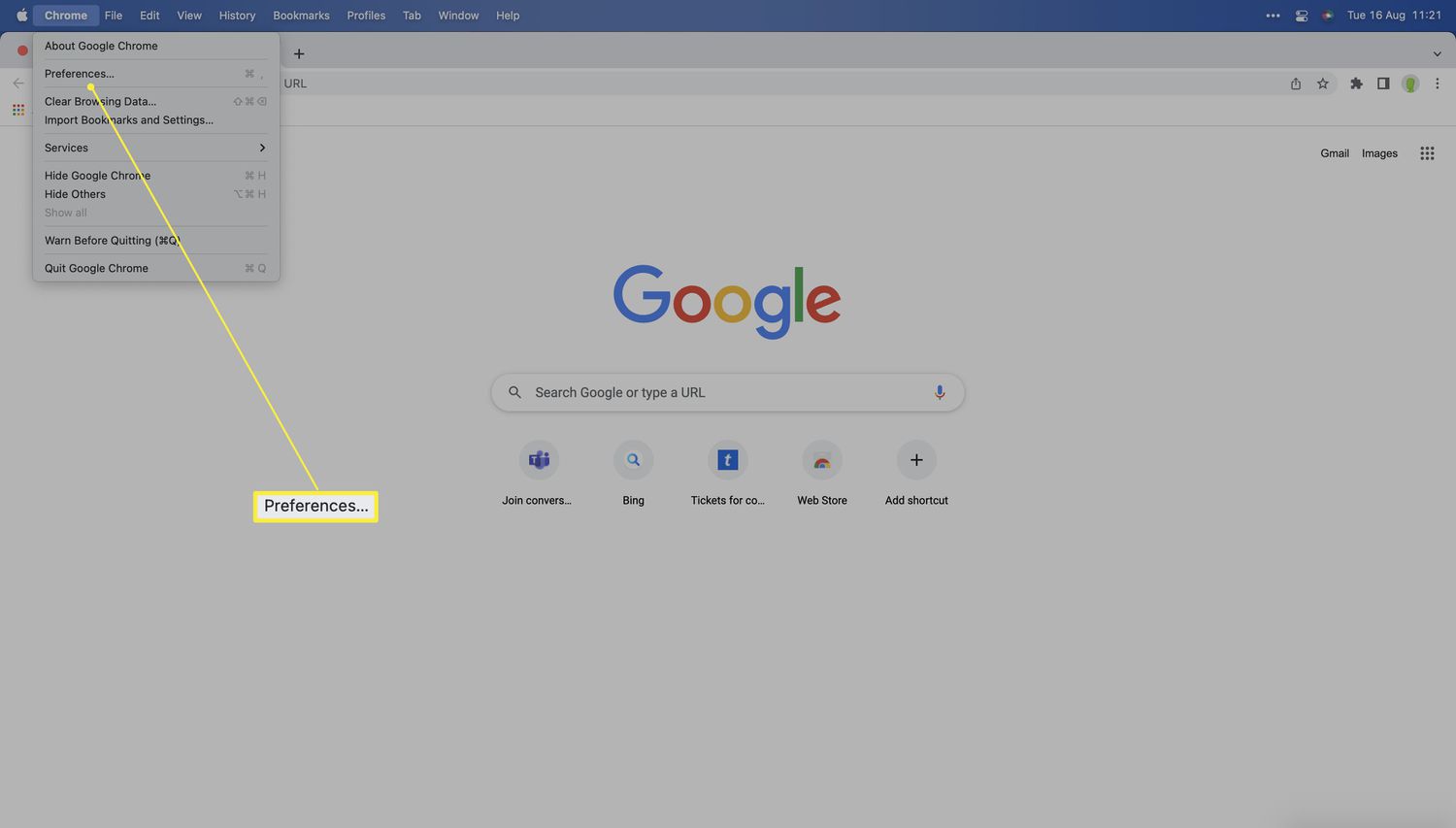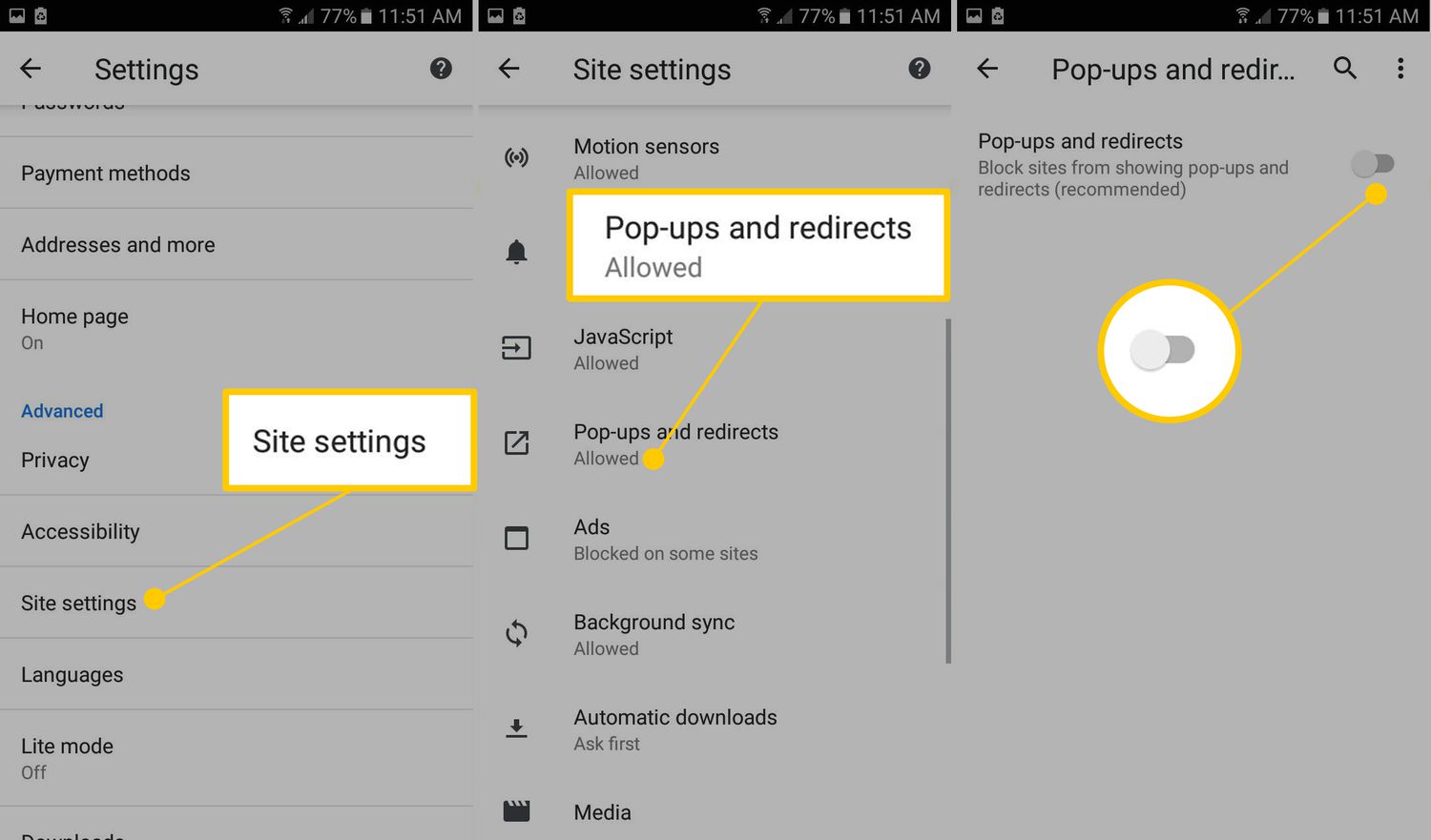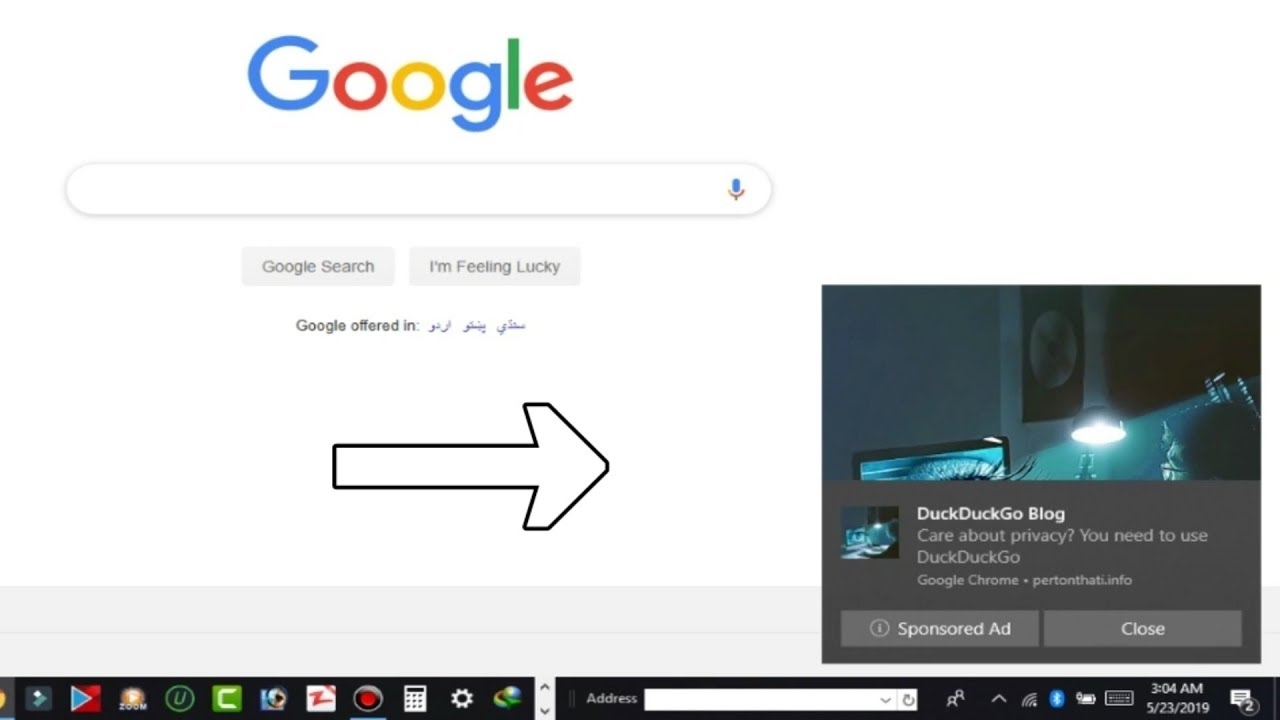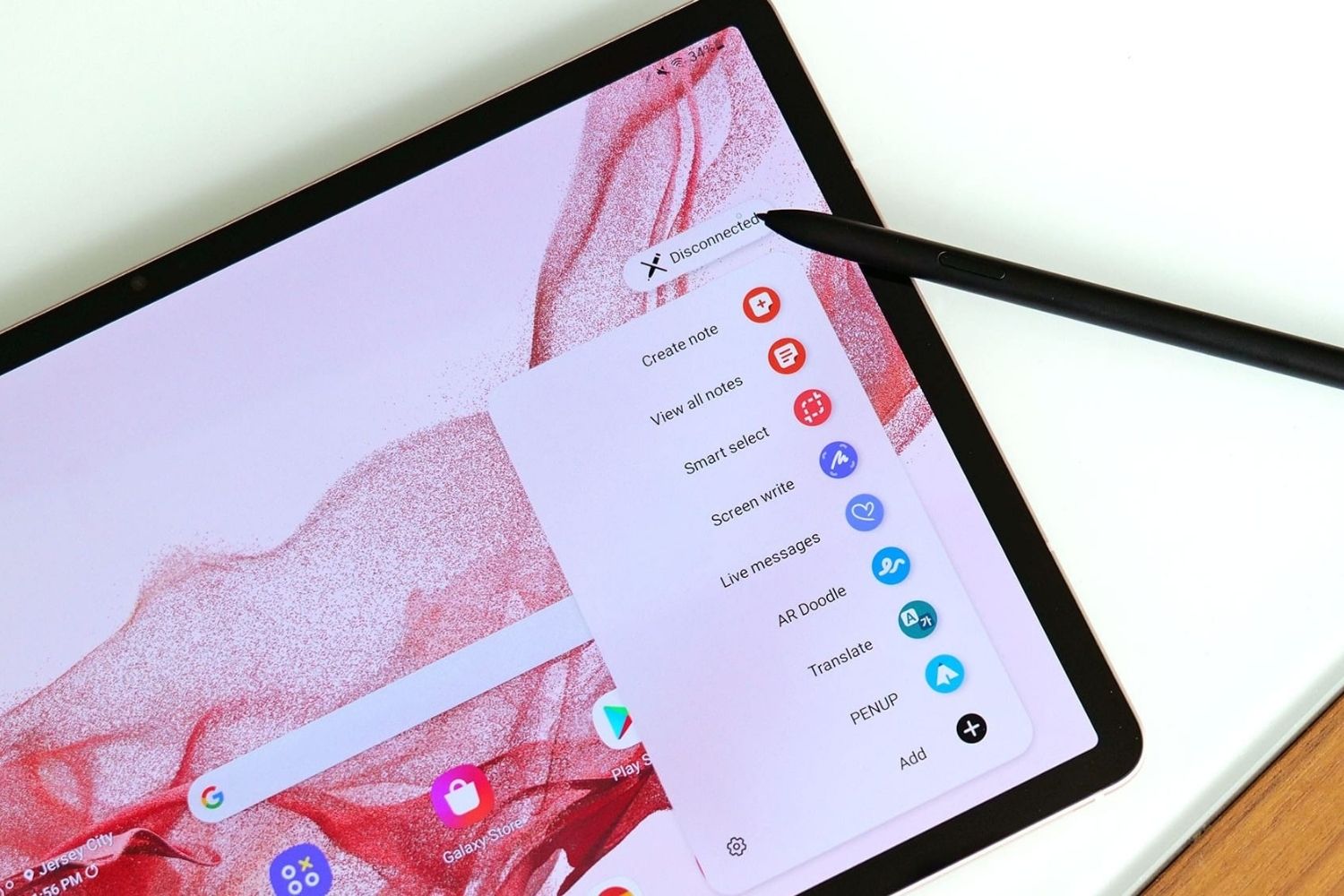Introduction
Pop-up ads can be incredibly frustrating when browsing the web. They disrupt your online experience, bombard you with unwanted content, and can even pose security risks. If you're a Chrome user, you're in luck. There are several effective methods to combat these pesky pop-ups and reclaim a seamless browsing experience.
In this article, we'll delve into the various strategies for stopping pop-ups on Chrome. Whether you're encountering pop-ups on a daily basis or just want to fortify your browsing environment, you'll find practical solutions to address this common nuisance. From leveraging Chrome's built-in features to exploring the world of browser extensions, we'll guide you through the process of regaining control over your online encounters.
So, if you're tired of being bombarded with intrusive pop-ups while trying to read an article, watch a video, or simply browse the web, you're in the right place. Let's embark on a journey to reclaim a pop-up-free browsing experience with Chrome.
Understanding Pop-Ups
Pop-ups are a common annoyance encountered while browsing the internet. These intrusive windows can appear suddenly, often overlaying the content you are trying to view. They can range from innocuous advertisements to potentially harmful phishing attempts. Understanding the nature of pop-ups is crucial in effectively combating them.
Pop-ups are designed to grab your attention and divert it to a specific message or offer. They are commonly used for advertising purposes, but they can also be utilized for malicious activities. Some pop-ups may prompt you to click on misleading links, leading to potentially harmful websites or initiating downloads of malware onto your device.
It's important to note that not all pop-ups are inherently harmful. Many legitimate websites use pop-ups for various purposes, such as displaying cookie consent notices, login prompts, or notifications. However, the intrusive nature of pop-ups, especially when they appear excessively or without user consent, has led to widespread frustration among internet users.
In some cases, pop-ups can be triggered by certain website features, such as click-triggered pop-ups or exit-intent pop-ups that appear when attempting to leave a page. Additionally, pop-ups can manifest as new browser windows or tabs, disrupting the browsing flow and potentially causing confusion for users.
Understanding the different types and behaviors of pop-ups is essential for implementing effective countermeasures. By recognizing the various forms and intentions behind pop-ups, users can make informed decisions when choosing the most suitable methods to prevent or block them.
In the following sections, we will explore the built-in features of Chrome, the utilization of extensions, and the adjustment of browser settings to mitigate the impact of pop-ups. By gaining a deeper understanding of pop-ups and the available solutions, users can navigate the online landscape with greater confidence and security.
Built-In Pop-Up Blocker
Chrome comes equipped with a robust built-in pop-up blocker that serves as the first line of defense against intrusive pop-ups. This native feature is designed to automatically identify and suppress pop-up windows, providing users with a more streamlined and uninterrupted browsing experience.
When a website attempts to generate a pop-up, Chrome's pop-up blocker evaluates the behavior and source of the pop-up, determining whether it aligns with the user's browsing activity. If the pop-up is deemed intrusive or unsolicited, Chrome intervenes by preventing it from materializing on the screen.
The effectiveness of Chrome's built-in pop-up blocker is attributed to its ability to discern between legitimate pop-ups, such as those initiated by user actions or essential website functions, and disruptive pop-ups that aim to hijack the user's attention. By leveraging advanced algorithms and heuristics, the blocker can differentiate between benign and intrusive pop-up behaviors, thereby safeguarding users from unwarranted distractions.
Furthermore, Chrome's pop-up blocker operates seamlessly in the background, requiring minimal user intervention. This means that users can browse with confidence, knowing that the browser is actively shielding them from the annoyance and potential risks associated with pop-ups.
In the event that a legitimate pop-up is inadvertently blocked, Chrome provides users with a visible notification near the address bar, allowing them to easily manage and permit pop-ups from specific websites. This granular control empowers users to tailor their pop-up blocking preferences according to their individual browsing habits and trusted sources.
Overall, Chrome's built-in pop-up blocker stands as a reliable and efficient defense mechanism, enhancing the browsing experience by mitigating the disruptive impact of pop-ups. Its seamless operation and user-friendly controls make it an essential component of Chrome's arsenal against intrusive online elements.
By harnessing the capabilities of Chrome's native pop-up blocker, users can navigate the web with greater peace of mind, knowing that their browsing sessions are shielded from the unwelcome intrusion of pop-up windows.
Using Chrome Extensions
Chrome extensions offer a versatile and customizable approach to enhancing the browsing experience, including the ability to effectively combat pop-ups. These small software programs, easily downloadable from the Chrome Web Store, empower users with a wide array of functionalities, from productivity tools to specialized ad blockers.
When it comes to tackling pop-ups, numerous extensions are specifically designed to target and neutralize these intrusive elements. Ad blockers, in particular, have gained popularity for their ability to filter out unwanted advertisements, including pop-ups, thereby fostering a more streamlined and distraction-free browsing environment.
One of the key advantages of using Chrome extensions to block pop-ups is the flexibility they offer in tailoring the browsing experience to individual preferences. Users can choose from a diverse selection of ad-blocking extensions, each with its own set of features and customization options. This allows for a personalized approach to pop-up management, enabling users to fine-tune the level of aggressiveness in blocking pop-ups based on their browsing habits and tolerance for advertisements.
Furthermore, many ad-blocking extensions provide additional benefits beyond pop-up suppression. They can effectively eliminate various forms of online ads, including banner ads, video ads, and sponsored content, contributing to a cleaner and more visually appealing web experience. By leveraging these extensions, users can enjoy faster page loading times and reduced clutter on websites, ultimately enhancing their overall browsing satisfaction.
It's important to note that while ad-blocking extensions can significantly reduce the occurrence of pop-ups, they may also impact the revenue streams of certain websites that rely on advertising for monetization. As a result, some users may choose to selectively enable or disable ad blockers for specific websites, striking a balance between ad-free browsing and supporting content creators.
In addition to ad blockers, Chrome offers a diverse range of extensions that cater to various aspects of online security and privacy. Some extensions focus on preventing tracking and data collection, while others provide comprehensive security features to safeguard users from malicious websites and phishing attempts.
By leveraging the capabilities of Chrome extensions, users can take proactive measures to fortify their browsing experience against the intrusion of pop-ups and other unwanted distractions. Whether it's through ad blockers, privacy-focused extensions, or security enhancements, the Chrome Web Store offers a wealth of options to empower users in shaping their ideal online environment.
In summary, Chrome extensions serve as valuable tools for combating pop-ups and enhancing the overall browsing experience. With their customizable features and diverse functionalities, extensions provide users with the means to exert greater control over their online encounters, fostering a more secure, efficient, and enjoyable web experience.
Adjusting Chrome Settings
In addition to leveraging Chrome's built-in pop-up blocker and exploring the realm of browser extensions, users can further refine their browsing environment by adjusting specific settings within the Chrome browser. These settings offer a level of customization that allows users to fine-tune their pop-up management preferences and enhance their overall browsing security.
One of the key settings that can be adjusted to mitigate the impact of pop-ups is the "Content Settings" within Chrome. By accessing the Content Settings menu, users can exert granular control over the behavior of pop-ups, as well as other website content such as cookies, JavaScript, and plugins. This level of customization empowers users to tailor their browsing experience according to their individual preferences and security considerations.
Within the Content Settings menu, users can navigate to the "Pop-ups and redirects" section, where they have the option to block or allow pop-ups from specific sites. This feature enables users to create a personalized whitelist of trusted websites that are permitted to generate pop-ups, while automatically blocking pop-ups from unrecognized or potentially malicious sources. By curating this list, users can strike a balance between minimizing disruptive pop-ups and ensuring that essential pop-ups from trusted websites are not inadvertently suppressed.
Furthermore, Chrome's Content Settings provide additional controls for managing website permissions, including the ability to block or allow notifications, manage automatic downloads, and control access to sensitive features such as camera and microphone usage. By proactively configuring these settings, users can fortify their browsing environment against a wide range of potential intrusions, not limited to pop-ups alone.
In addition to the Content Settings, Chrome offers a variety of advanced settings accessible through the browser's configuration menu. These settings encompass a broad spectrum of options, ranging from privacy and security preferences to performance optimizations. Users can delve into these settings to customize their browsing experience according to their specific requirements, including the management of pop-ups and other intrusive elements.
By adjusting Chrome settings, users can tailor their browsing environment to align with their preferences and security priorities. Whether it's fine-tuning pop-up behavior, enhancing privacy controls, or optimizing performance, the flexibility offered by Chrome's settings empowers users to craft a personalized and secure browsing experience.
In summary, the ability to adjust Chrome settings provides users with a powerful tool for managing pop-ups and enhancing their overall browsing security. By leveraging these customizable settings, users can exert greater control over their online encounters, fostering a more secure, efficient, and enjoyable web experience.
Updating Chrome
Keeping your Chrome browser up to date is a crucial aspect of maintaining a secure and optimized browsing experience. Regular updates not only introduce new features and performance enhancements but also play a pivotal role in addressing security vulnerabilities and mitigating potential risks associated with pop-ups and other online threats.
When Chrome releases updates, whether they are minor patches or major version upgrades, they often include security fixes that target known vulnerabilities. By promptly updating your browser, you ensure that these security patches are applied, bolstering the browser's resilience against potential exploits and safeguarding your online activities from malicious attacks.
In addition to security enhancements, Chrome updates frequently introduce improvements to the browser's core functionality, performance optimizations, and compatibility enhancements. These updates contribute to a smoother and more efficient browsing experience, reducing the likelihood of encountering issues related to pop-ups, website compatibility, or overall browser stability.
Furthermore, Chrome updates often incorporate refinements to the browser's built-in features, including the pop-up blocker. As part of ongoing development efforts, Google continuously enhances the effectiveness and reliability of the pop-up blocker to better combat intrusive pop-ups and provide users with a more seamless browsing environment.
To ensure that your Chrome browser remains updated, it's important to enable automatic updates. By default, Chrome is designed to automatically download and install updates in the background, ensuring that users are consistently benefiting from the latest improvements and security enhancements without requiring manual intervention.
However, users can also manually check for updates and initiate the update process if necessary. This can be done by accessing the Chrome settings menu, navigating to the "About Chrome" section, and initiating a manual check for updates. This proactive approach allows users to verify that their browser is running the latest version, providing peace of mind and ensuring that they are leveraging the most up-to-date security features and performance optimizations.
In summary, updating Chrome is a fundamental practice for maintaining a secure, efficient, and reliable browsing experience. By staying current with the latest browser updates, users can benefit from enhanced security, improved performance, and ongoing refinements to the pop-up blocker and other essential features, ultimately contributing to a more seamless and protected online journey.
Conclusion
In conclusion, the prevalence of pop-up ads has long been a source of frustration for internet users, disrupting the online experience and posing potential security risks. However, with the robust capabilities of Google Chrome and the proactive measures available to users, the battle against intrusive pop-ups can be effectively waged.
By harnessing Chrome's built-in pop-up blocker, users can benefit from automatic and seamless protection against disruptive pop-ups, allowing for a more streamlined and uninterrupted browsing experience. The blocker's ability to discern between legitimate and intrusive pop-ups, coupled with its user-friendly controls, empowers users to navigate the web with greater confidence and security.
Furthermore, the realm of Chrome extensions offers a wealth of options for combating pop-ups, from specialized ad blockers to privacy-focused tools. These extensions provide users with customizable features to tailor their browsing environment, enabling them to exert greater control over the presence of pop-ups and other unwanted distractions. The flexibility and diverse functionalities offered by Chrome extensions empower users to shape their ideal online experience while fortifying their browsing security.
In addition to leveraging built-in features and extensions, users can fine-tune their pop-up management preferences by adjusting specific settings within the Chrome browser. The granular controls provided by Chrome's Content Settings and advanced configuration options enable users to curate a personalized browsing environment, striking a balance between minimizing disruptive pop-ups and ensuring a secure and efficient online experience.
Moreover, the importance of keeping Chrome up to date cannot be overstated. Regular updates not only introduce new features and performance enhancements but also play a pivotal role in addressing security vulnerabilities and refining the effectiveness of the pop-up blocker. By staying current with the latest browser updates, users can benefit from enhanced security, improved performance, and ongoing refinements to essential features, contributing to a more seamless and protected online journey.
In essence, the battle against pop-ups on Chrome is multifaceted, encompassing built-in defenses, customizable extensions, fine-tuned settings, and proactive maintenance through updates. By leveraging these strategies in unison, users can reclaim a pop-up-free browsing experience, fostering a more secure, efficient, and enjoyable journey through the digital landscape. With the right tools and proactive measures at their disposal, users can navigate the web with confidence, knowing that their online encounters are shielded from the unwelcome intrusion of pop-up windows.

























